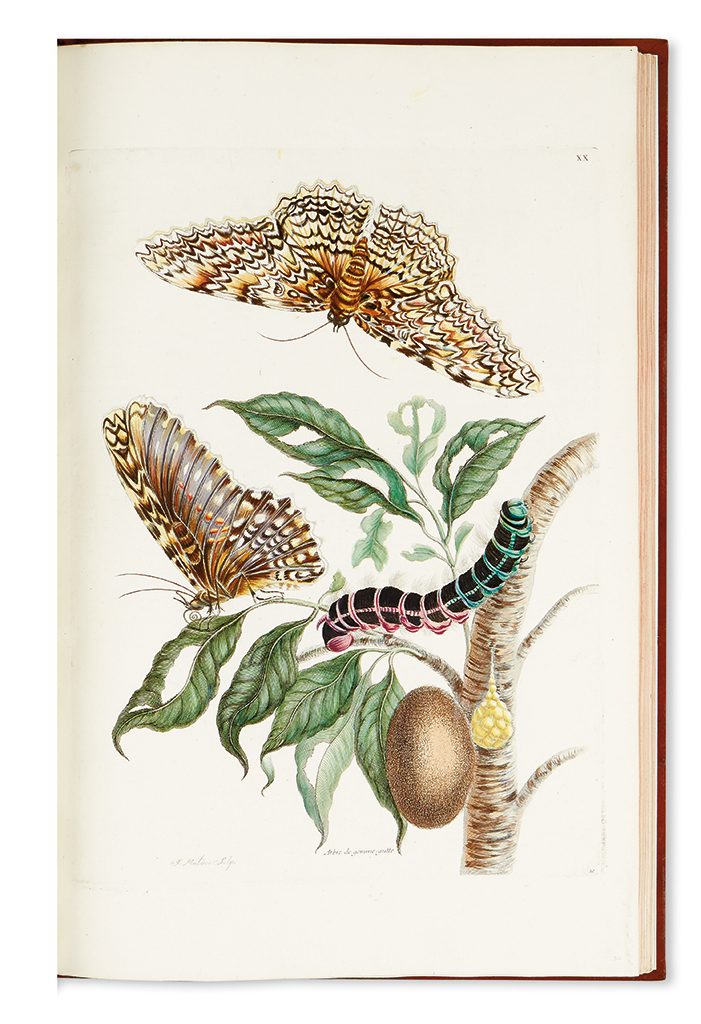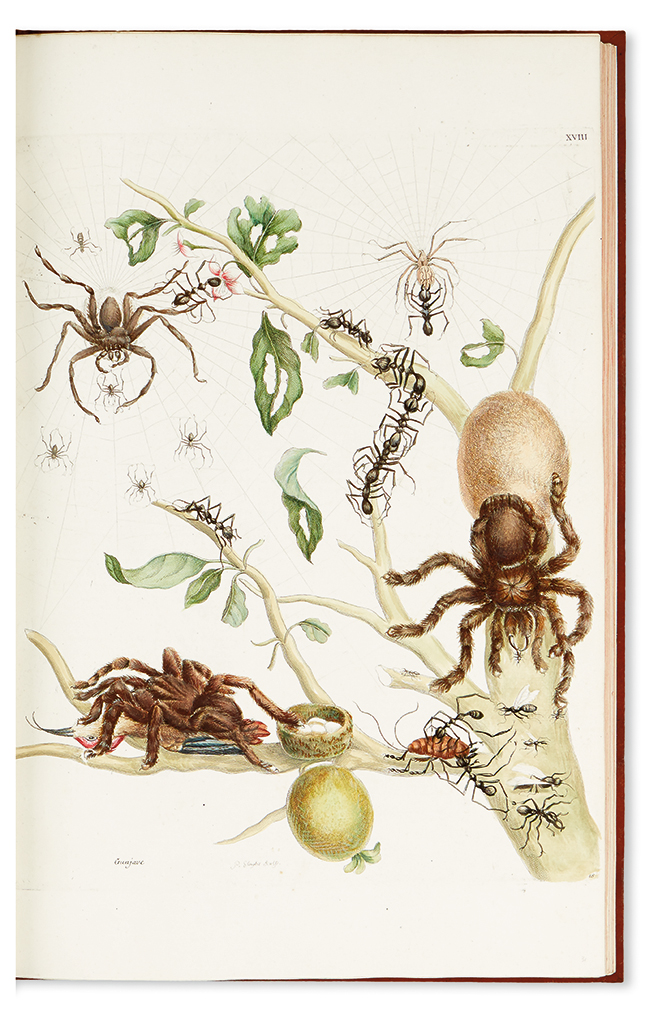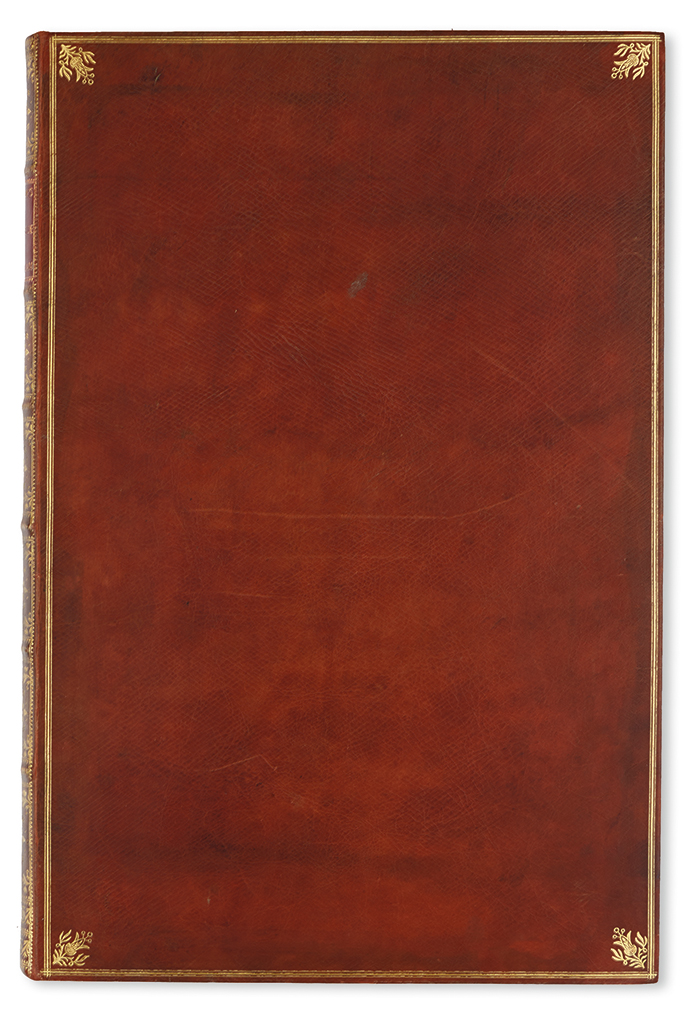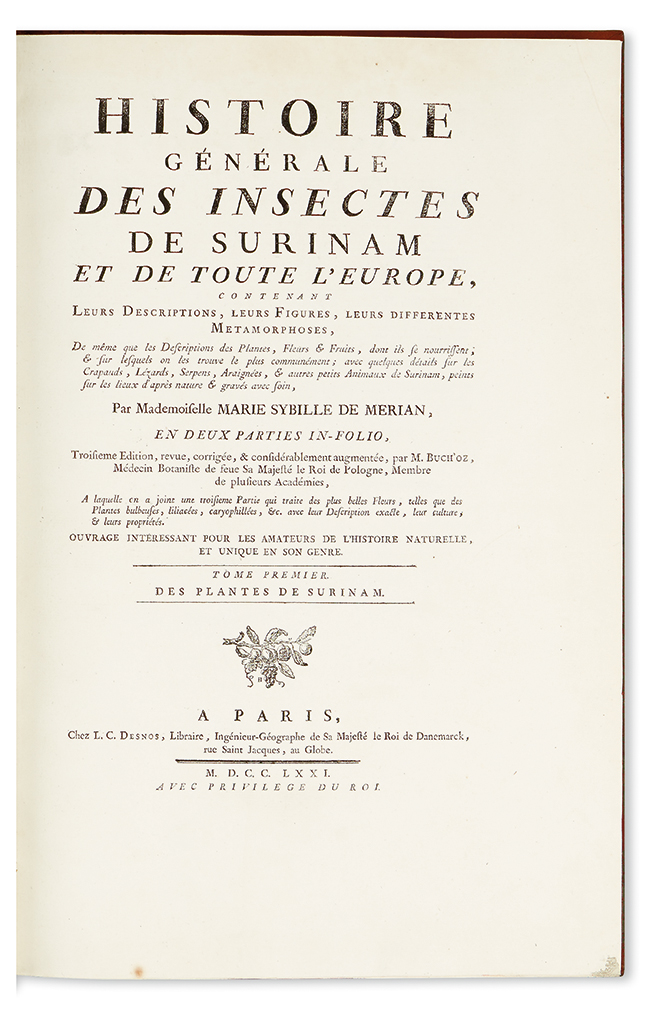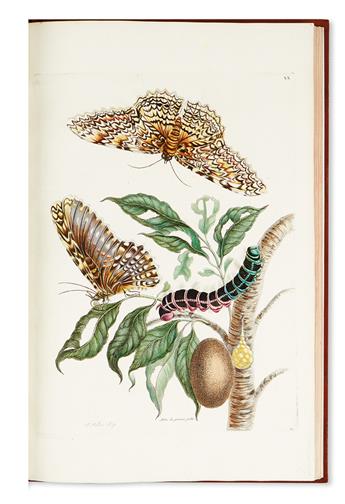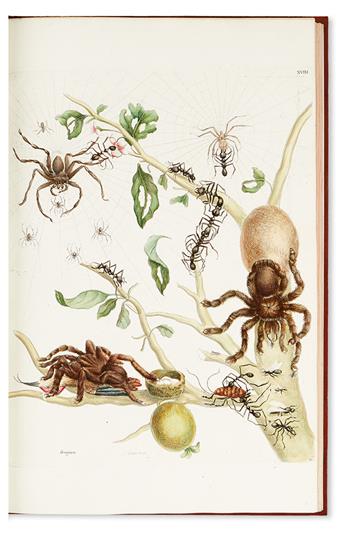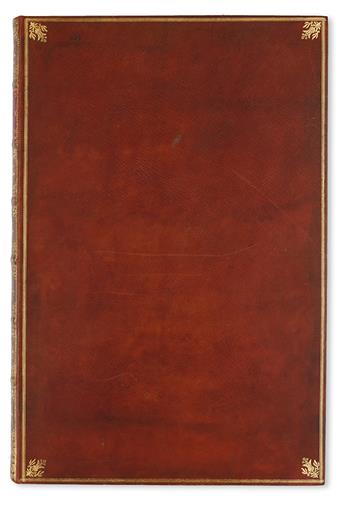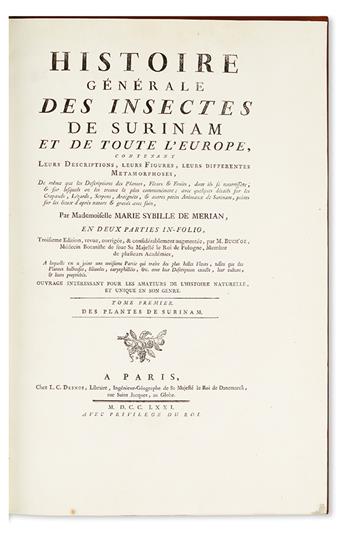Sale 2417 - Lot 262
Unsold
Estimate: $ 60,000 - $ 90,000
MERIAN, MARIA SIBYLLA. Histoire générale des insectes de Surinam et de toute l'Europe. . . Troisième édition revue, corrigée et considérablement augmentée par M. Buch'oz... à laquelle on a joint une troisième partie qui traite des plus belles fleurs. 72 hand-colored engraved plates, one folding, by J. Mulder, P. Sluyter and A. Stopendaal, all after Merian, each with the French names of the plants depicted added to image area. Engraved hand-colored additional allegorical title dated 1768. 1 volume ('...Tome Premier, Des Plantes de Surinam'). Folio, 19 1/2x13 inches, expertly bound to style in 18th-century diced russia gilt, covers with triple fillet border with floral spray cornerpiece, spine in seven compartments with raised bands, red morocco lettering-piece in the second, the others with repeat decoration in gilt made up from various small tools. Paris: Chez L.C. Desnos, 1771
Additional Details
A fine hand-colored copy of the complete series of 'Surinam' plates by Merian : beautiful images of the plants and insects of Surinam, and one of the most famous natural history works of the 18th century.
Merian was the daughter of the well-known Swiss engraver/publisher Matthaeus Merian. Her mother was Dutch, and after Matthaeus' early death she married the flower painter Jacob Marrell. Tradition has it that it was one of his pupils, Johann Graff of Nuremberg, who first taught Maria to paint, and certainly they later married. Two of Maria's primary interests were botany and entomology and the present work reflected that interest. The impetus to produce the present plates came when, having left Graff, she was shown a collection of tropical insects from Surinam. This inspired her, and, together with her daughter Dorothea, she embarked on a remarkably enterprising journey. They arrived in South America in late summer 1699 and stayed until June 1701 studying and recording the plants and insects.The results of their labours being the magnificent Metamorphosis insectorum Surinamensium, with 60 plates, was published in 1705. Later editions, including the present issue (...Tome Premier. Des Plantes de Surinam), were extended to include an additional 12 plates by Maria's eldest daughter Johanna. Peter Dance writes of the work, that it was 'easily the most magnificent work on insects so far produced... [combining] science and art in equal proportions... Her portrayals of living insects and other animals were imbued with a charm, a minuteness of observation and artistic sensibility that had not previously been seen in a natural history book' (The Art of Natural History [1978]).
The printing plates for the present work were apparently bought by Desnos at the auction in Paris of the collection of 'Un Curieux de Paris.' This is possibly a reference to a member of the Huquier family. 'Huquier fils' of Paris published a reissue of the plates of the Metamorphosis... (without text) in about 1745 under the title Recueil de plantes des Indes (Hunt 524). The history of the plates between 1730 and 1745 is not known with any certainty, but Desnos notes that the previous owner of the plates had secured them in Amsterdam many years earlier.
cf. Blunt (1994) pp.142-145; cf. Dunthorne 205; cf. Great Flower Books (1990) p.119; cf. Hunt 467 and 524; cf. Nissen BBI 1341.
Merian was the daughter of the well-known Swiss engraver/publisher Matthaeus Merian. Her mother was Dutch, and after Matthaeus' early death she married the flower painter Jacob Marrell. Tradition has it that it was one of his pupils, Johann Graff of Nuremberg, who first taught Maria to paint, and certainly they later married. Two of Maria's primary interests were botany and entomology and the present work reflected that interest. The impetus to produce the present plates came when, having left Graff, she was shown a collection of tropical insects from Surinam. This inspired her, and, together with her daughter Dorothea, she embarked on a remarkably enterprising journey. They arrived in South America in late summer 1699 and stayed until June 1701 studying and recording the plants and insects.The results of their labours being the magnificent Metamorphosis insectorum Surinamensium, with 60 plates, was published in 1705. Later editions, including the present issue (...Tome Premier. Des Plantes de Surinam), were extended to include an additional 12 plates by Maria's eldest daughter Johanna. Peter Dance writes of the work, that it was 'easily the most magnificent work on insects so far produced... [combining] science and art in equal proportions... Her portrayals of living insects and other animals were imbued with a charm, a minuteness of observation and artistic sensibility that had not previously been seen in a natural history book' (The Art of Natural History [1978]).
The printing plates for the present work were apparently bought by Desnos at the auction in Paris of the collection of 'Un Curieux de Paris.' This is possibly a reference to a member of the Huquier family. 'Huquier fils' of Paris published a reissue of the plates of the Metamorphosis... (without text) in about 1745 under the title Recueil de plantes des Indes (Hunt 524). The history of the plates between 1730 and 1745 is not known with any certainty, but Desnos notes that the previous owner of the plates had secured them in Amsterdam many years earlier.
cf. Blunt (1994) pp.142-145; cf. Dunthorne 205; cf. Great Flower Books (1990) p.119; cf. Hunt 467 and 524; cf. Nissen BBI 1341.
Exhibition Hours
Exhibition Hours
Aliquam vulputate ornare congue. Vestibulum maximus, libero in placerat faucibus, risus nisl molestie massa, ut maximus metus lectus vel lorem.



